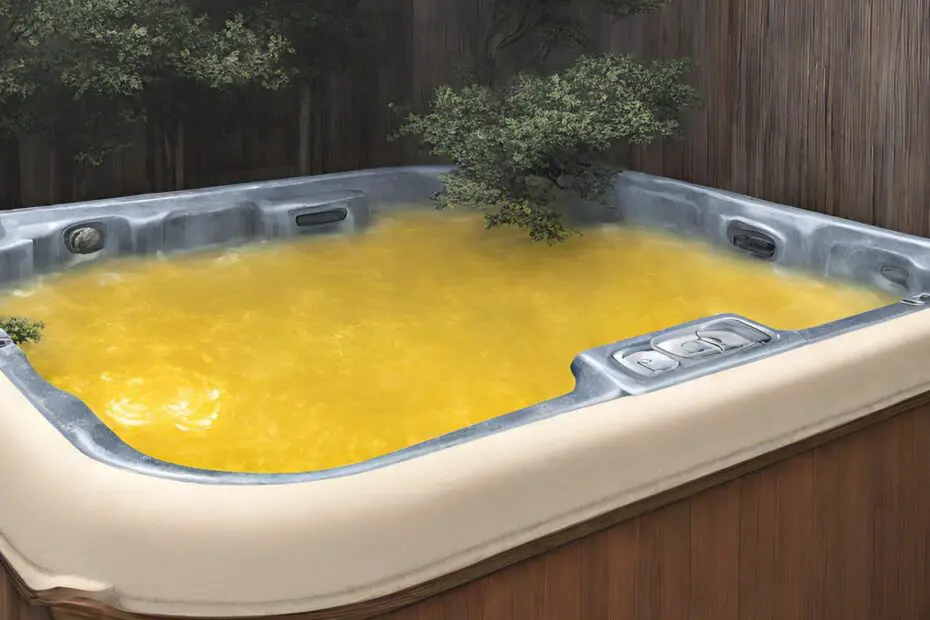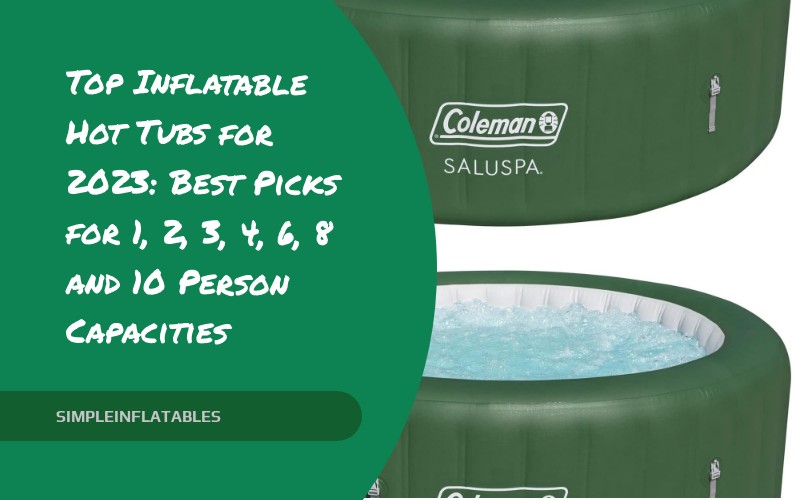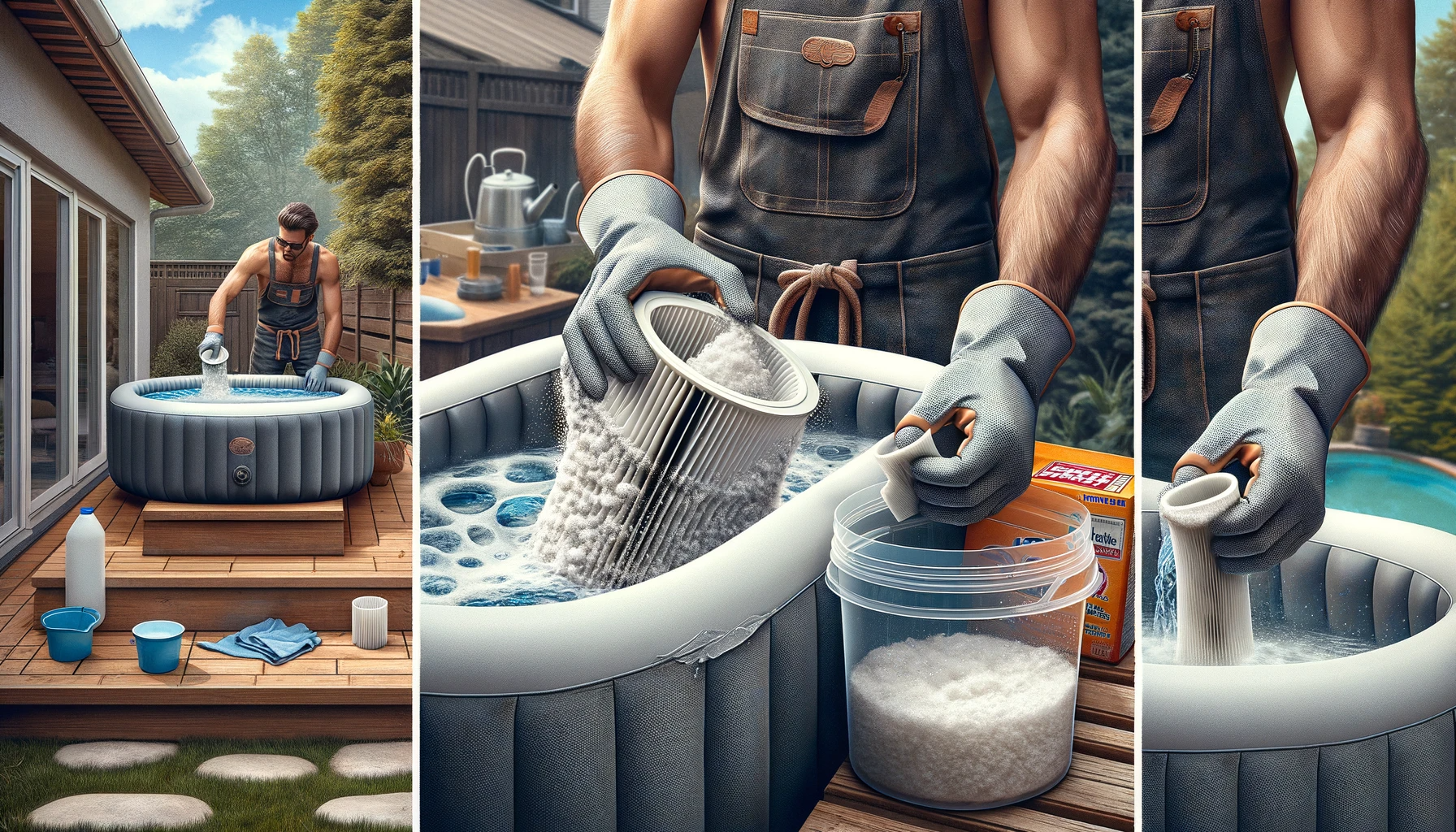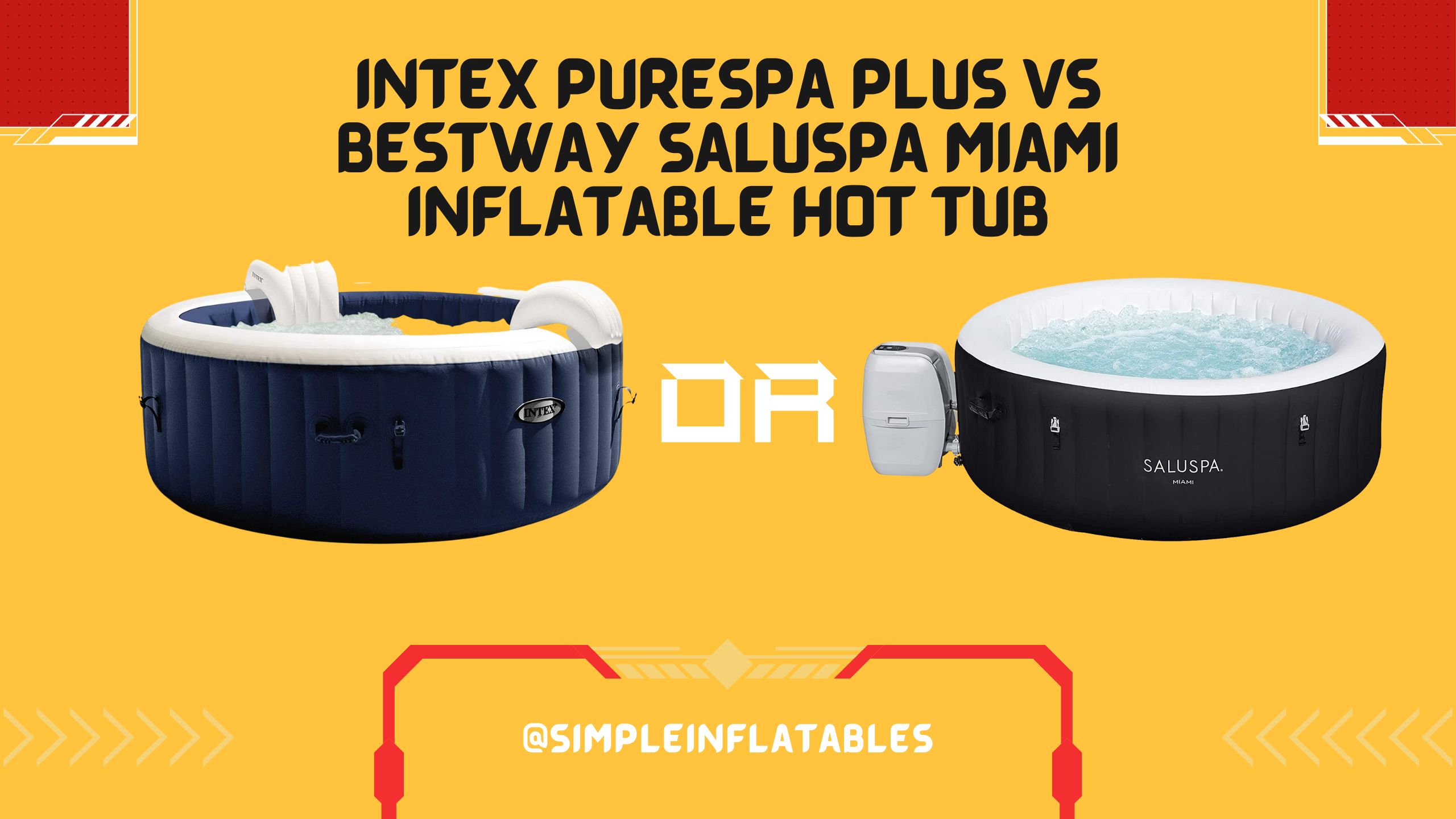Finding yellow gunk in your hot tub can be an unsettling experience. This unwelcome sight often raises concerns about the cleanliness and safety of your hot tub. In this article, we’ll explore what causes this yellow buildup and provide practical steps to eliminate it, ensuring a clean, healthy, and enjoyable hot tub experience.
What is Yellow Gunk?
Yellow gunk in hot tubs is usually a biofilm, a slimy substance formed by bacteria and other microorganisms. This buildup typically occurs in areas with poor water circulation, like jets and pipes, and can be attributed to various factors.
Common Causes of Yellow Gunk
- Inadequate Sanitization: Insufficient levels of sanitizers like chlorine or bromine can allow bacteria to thrive.
- Irregular Maintenance: Not cleaning or changing the water regularly can lead to the buildup of organic matter, encouraging bacterial growth.
- Poor Water Chemistry: Imbalanced pH or alkalinity levels can create an environment conducive to biofilm development.
- Contamination: Body oils, lotions, and other substances introduced by bathers can contribute to the problem.
Health Risks
Yellow gunk can harbor bacteria, including pathogens. Prolonged exposure to such bacteria can lead to skin irritations, infections, and other health issues.
How to Remove Yellow Gunk
Step 1: Drain and Clean
Drain your hot tub completely. Thoroughly clean all surfaces, paying special attention to jets, filters, and hard-to-reach areas.
Step 2: Use a Biofilm Remover
Apply a biofilm remover product, following the manufacturer’s instructions. These solutions are designed to break down the biofilm, making it easier to remove.
Step 3: Flush the System
Refill the hot tub with water and add the recommended amount of biofilm remover. Turn on the jets to ensure the solution circulates through the entire system.
Step 4: Drain and Rinse
After the recommended treatment time, drain the hot tub again and rinse thoroughly to ensure all residues are removed.
Step 5: Refill and Balance Water Chemistry
Refill your hot tub with fresh water and balance the pH, alkalinity, and sanitizer levels.
Preventing Future Buildup
- Regular Maintenance: Clean your hot tub regularly and change the water every 3-4 months or more frequently with heavy use.
- Proper Sanitization: Maintain the correct levels of sanitizers and regularly check the water chemistry.
- Use a Hot Tub Cover: This helps keep out contaminants and maintain water balance.
- Encourage Bather Hygiene: Showering before using the hot tub can significantly reduce the introduction of organic materials.
Conclusion
Yellow gunk in your hot tub can be effectively managed with the right approach. Regular maintenance, proper sanitation, and prompt attention to any signs of biofilm can help ensure your hot tub remains a safe and enjoyable retreat.
frequently asked questions (FAQs) about yellow gunk in hot tubs
What exactly is the yellow gunk in my hot tub?
The yellow gunk typically consists of biofilm, a slimy substance formed by a colony of bacteria and other microorganisms. It often accumulates in areas with poor water circulation and can be a result of inadequate sanitization or maintenance.
Is yellow gunk in a hot tub harmful?
Yes, it can be harmful. Yellow gunk or biofilm can harbor bacteria, including potentially harmful pathogens. Prolonged exposure can lead to skin irritations and infections.
How can I prevent yellow gunk from forming in my hot tub?
Regular maintenance is key to preventing yellow gunk. This includes maintaining proper sanitizer levels, balancing water chemistry, changing the water regularly, and ensuring good bather hygiene. Using a hot tub cover can also help keep out contaminants.
Can I still use my hot tub if I notice yellow gunk?
It’s best to avoid using the hot tub until you’ve completely removed the gunk and balanced the water chemistry. Using the hot tub with yellow gunk present can increase the risk of skin irritation and other health issues.
How often should I change the water in my hot tub to prevent yellow gunk?
Typically, it’s recommended to change the hot tub water every 3-4 months. However, if your hot tub sees heavy use or if you frequently find yellow gunk, you may need to change the water more often.
Are there any specific products I should use to clean yellow gunk?
Yes, there are biofilm remover products specifically designed to break down and remove biofilm. These should be used according to the manufacturer’s instructions for effective results.
Will balancing the pH and alkalinity levels in my hot tub water help prevent yellow gunk?
Yes, maintaining balanced pH and alkalinity levels is crucial in preventing the growth of biofilm and bacteria that contribute to yellow gunk. Regularly test and adjust your water chemistry to keep it within the recommended ranges.
Should I clean the filters if I find yellow gunk in my hot tub?
Absolutely. Filters can trap bacteria and other contaminants that contribute to the formation of yellow gunk. Clean or replace filters regularly as part of your hot tub maintenance routine.
How do I know if the yellow gunk has been completely removed?
After thoroughly cleaning and treating your hot tub, visually inspect all surfaces, jets, and hidden areas. The absence of slimy residue and a balanced water chemistry are good indicators that the gunk has been removed.
Can yellow gunk damage my hot tub?
Over time, unchecked biofilm buildup can lead to clogs in the jets and filtration system, potentially damaging your hot tub. Regular cleaning and maintenance can prevent such damage.



